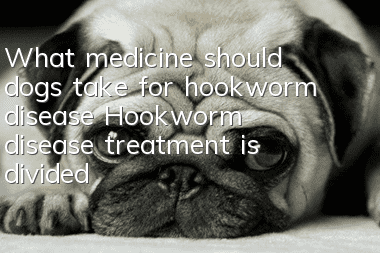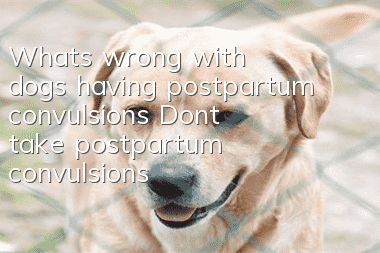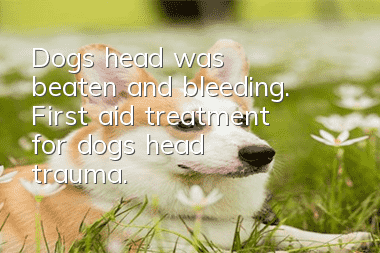What medicine should dogs take for hookworm disease? Hookworm disease treatment is divided into three steps

Prevention and treatment measures for dog hookworm
1. Anthelmintic: 4.5% iodonitrophenol solution, subcutaneous injection dose is 0.22 ml (10 mg) per kilogram of body weight. The repellent effect of dogs on various hookworms is close to 100%. In addition, levamisole, toluene-orbitazole, and pyrimidine can also be used to treat canine ascariasis.
2. Severe anemia requires symptomatic treatment, oral or injected iron supplements or blood transfusions.
3. Sanitation and disinfection: The kennel should be kept clean and dry, and feces should be cleaned up in time. Pour boiling water on the wooden parts of the cage, and burn the iron parts or the floor with a blowtorch. Moveable utensils can be moved outdoors and exposed to the sun to kill insect eggs.
Causes of hookworm disease in dogs
1. The common pathogens causing hookworm disease in dogs are Ancylostoma canis and Ancylostoma canis.
2. Canine hookworm eggs are excreted with the feces. Under suitable conditions, the larvae (rod-shaped larvae) hatch out in 12-30 hours. After about 1 week, they transform into infective larvae (sheathed filamentous larvae). ).
3. Dogs are usually infected through the mouth, but can also be infected through the skin and oral mucosa.
4. When the larvae enter the host body through the mouth, they stay in the intestine, take off the sheath, and gradually develop into adult worms.
5. When the larvae invade through the skin, they burrow into peripheral blood vessels, migrate to the alveoli and trachea, enter the mouth with sputum, and develop into adult worms in the small intestine after swallowing.
6. Canine hookworm can also be infected through the placenta and colostrum.
Clinical symptoms of hookworm disease in dogs
1. In severe infection, the mucous membranes will be pale and thin, and the coat will be thick, matte, and easy to fall off;
2. Loss of appetite, heterophilia, vomiting, digestive disorders, alternating episodes of diarrhea and constipation;
3. The feces is bloody or black, and in severe cases, it is like tar and has a rancid smell;
4. If a large number of larvae invade through the skin, the skin will be inflamed and itchy, and some limbs will be swollen, followed by ulceration, or erosion of the corners of the mouth, etc.;
5. Puppies within 3 weeks of age infected with hookworm in the womb or colostrum can cause severe anemia, coma and death.
- Fungal dermatitis in dogs, improper care and treatment are useless
- Why do dogs keep coughing? Small symptoms may hide serious diseases
- What is special dog food? Let me introduce you to the most comprehensive special dog food
- Rabies Symptoms Stay away from suspicious animals showing these signs
- What is the reason for severe hair loss in dogs? The root cause of dog hair loss has something to do with you!
- Why does a female dog have a miscarriage? Analysis of causes and symptoms of dog miscarriage
- What methods can be used to detoxify a dog after being poisoned? Emergency treatment for different poisoning situations in dogs
- What are the symptoms of dog mange disease? [Picture] Severe cases can cause neuroencephalitis
- Three common skin diseases in dogs: Keep dogs away from skin diseases
- Is Noble dog food good? Is Noble dog food imported?



